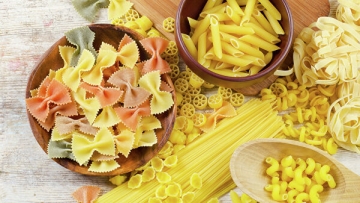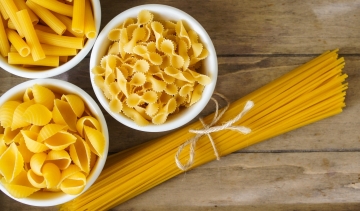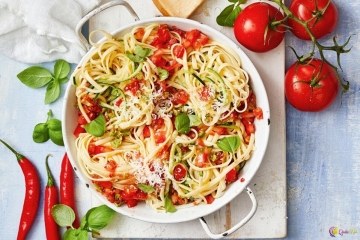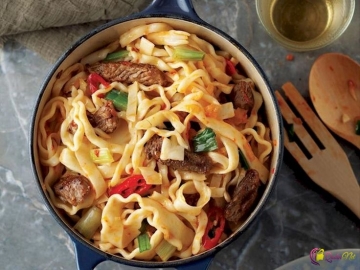1. Many people believe that the consumption of pasta (pasta, vermicelli, spaghetti, etc.) causes obesity. But this is false information. Pasta is a low-calorie product. The energy value of 100 grams of pasta is 300-400 calories. But we are talking about dry pasta. During cooking, pasta absorbs a large amount of water, the volume of which increases several times, and the amount of calories does not increase. If a person eats pasta with a small amount of vegetable oil and vegetables, it will never cause obesity. That is why pasta is an integral part of the Mediterranean diet, which is in vogue today. On the contrary, when cutlets, goulash, sausages and fatty sauces are added to pasta, the food becomes very high in calories. Frequent intake of such foods leads to obesity. Thus, fatty foods taken with pasta, not pasta, can cause obesity.
2. Pasta is considered by many to be a less good product. But this is also wrong. Pasta is made from wheat flour. Pasta contains useful substances such as protein, B vitamins, complex carbohydrates. B vitamins are very important for the nervous, cardiovascular and other systems and organs of the body. Cellulose (natural fibers) in pasta has a positive effect on the activity of the intestines, cleanses the intestines of harmful substances that accumulate there. Carbohydrates serve as a "fuel" in our body. Complex carbohydrates are absorbed by the body for a longer period of time than simple carbohydrates, and as a result, a person feels full for a long time. This prevents obesity.
3. Pasta is an environmentally friendly product. Preservatives, dyes, etc. are used in the preparation of these products. such as harmful substances are not used. Quick-cooked vermicelli ("noodles") is an exception. This product contains a large amount of flavors and colorings, etc. There are harmful substances. For this reason, such products should not be accepted.
4. The most useful pasta is made from durum wheat. The surface of such pasta is smooth, there may be black dots on the surface, the pasta is golden or amber in color, and there are no crumbs in the pasta pack. On the package there are such inscriptions as "Group A" ("Group A"), "status", "durum wheat" ("wheat of hard varieties"), "semolina di grano duro".
5. There are special types of medicinal pasta. During their preparation, wheat bran, vitamins, rice or buckwheat flour are added.



